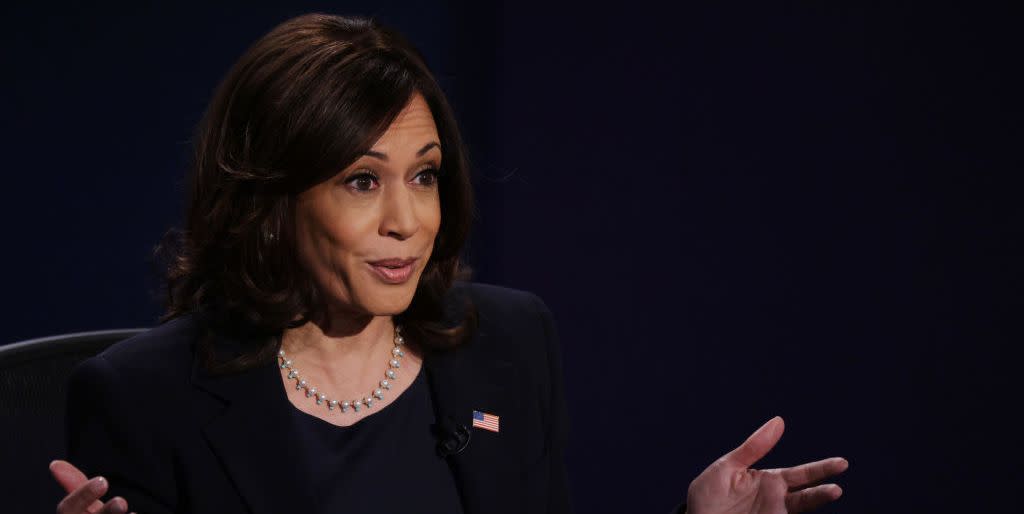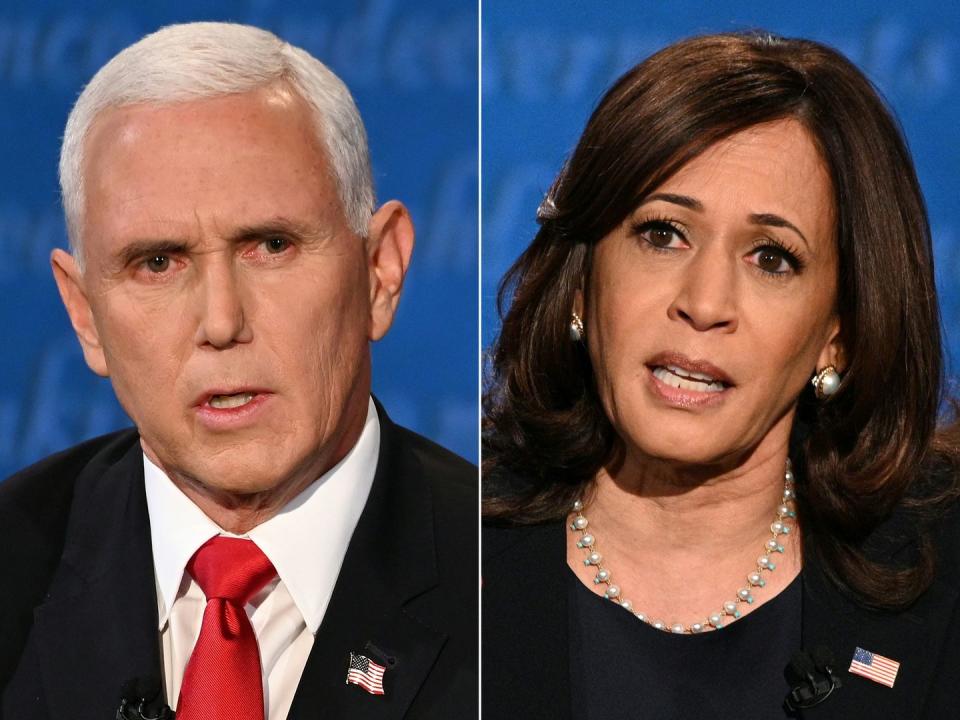Why Kamala Harris's Remarkably Unremarkable Fashion Is Revolutionary

- Oops!Something went wrong.Please try again later.
Kamala Harris is not afraid to make a statement—she just doesn't do it with her clothes.
The Vice Presidential candidate arrived at last night's debate prepared to lacerate her opponent with her notoriously incisive arguments, wearing an outfit designed to shrink into the background. Placed side-by-side onscreen—she in her black pantsuit, black shirt, pearls, and flag pin; he in his black suit, white shirt, red tie, and flag pin—Harris's clothing almost blended into Pence's, notable only in its somber simplicity.
Save for a few exceptions (the bedazzled rainbow jean jacket she wore to a Pride parade, for instance) Harris's fashions seem almost designed to resist interpretation. Her blazers, pantsuits, understated pearls—yes, even her oft-noted Chuck Taylors—stare blankly back at us when we hold them up to a microscope, offering nothing but a vague, down-to-earth professionalism.

It's the kind of inconspicuousness that few, if any, other women politicians have managed to pull off, largely because there isn't a default sartorial choice for women in politics. While their cisgender male colleagues have been sporting variations on the same dark suit for over two centuries, everyone else was stuck staring at their closet, wondering what to pick, viscerally aware that whichever path they chose, they couldn't bypass criticism.
When women first really began making inroads in Washington in the ’50s and early ’60s, there wasn't much of a model for women's office garb, let alone a go-to political look. For a time, many wore blouses and skirts and dresses that wouldn't look out of place on a well-dressed housewife. In the ’80s, the pantsuit would come into style, allowing women to wrap themselves in the uniform of the patriarchy—an appropriation as simultaneously empowering and regressive as it sounds. And in the decades since, no real innovations have arrived to collapse the options: instead, women can wear just about anything that isn't deemed "too revealing" or out of the ordinary. Usually, they'll opt for something with a sheen of professionalism—a limited color palette, clean lines—but aside from that, it's up to the candidate herself to choose from a near-infinite number of visual identities.
This is why women's clothing choices are watched so closely in politics, while their male opponents hardly have to give their outfits a second thought: because they are making a choice. Each garment or accessory comes with a cultural history sewn in, and several levels of meaning—the price point, the history of the style, the designer's own baggage—to be read and deciphered by the public. For some, this can be an advantage, a way to bolster their message by underscoring it with their self-presentation (think about the second wave feminists who embraced pants, or Alexandria Ocasio-Cortez's embrace of hoop earrings—in her words, "Next time someone tells Bronx girls to take off their hoops, they can just say they’re dressing like a Congresswoman.") For others, it's a burden, another thing to worry about that men don't.
But Harris, by accident or strategic brilliance, has come close to sidestepping this trap. Her navy pantsuits and white shirts and jeans are not fashionable and not unfashionable. Her pearls are elegant but not presumptuous. Her Chuck Taylors signal relatability—she couldn't only wear workwear, lest she be accused of elitism—but they also aren't particularly cool or uncool. There's rarely a print in sight, and never a sparkle. Presented with an undifferentiated sea of black and gray, voters can hardly even focus on her clothes, let alone dissect them.
Rather than define her—like Hillary Clinton's rainbow of pantsuits did for her during the 2016 campaign, echoing the "lean in" style, white feminist politics she often espoused—Harris's clothing recedes into the background. Her style plays a supporting role, almost revolutionary in its passivity.
It does what a man's suit does.
You Might Also Like

